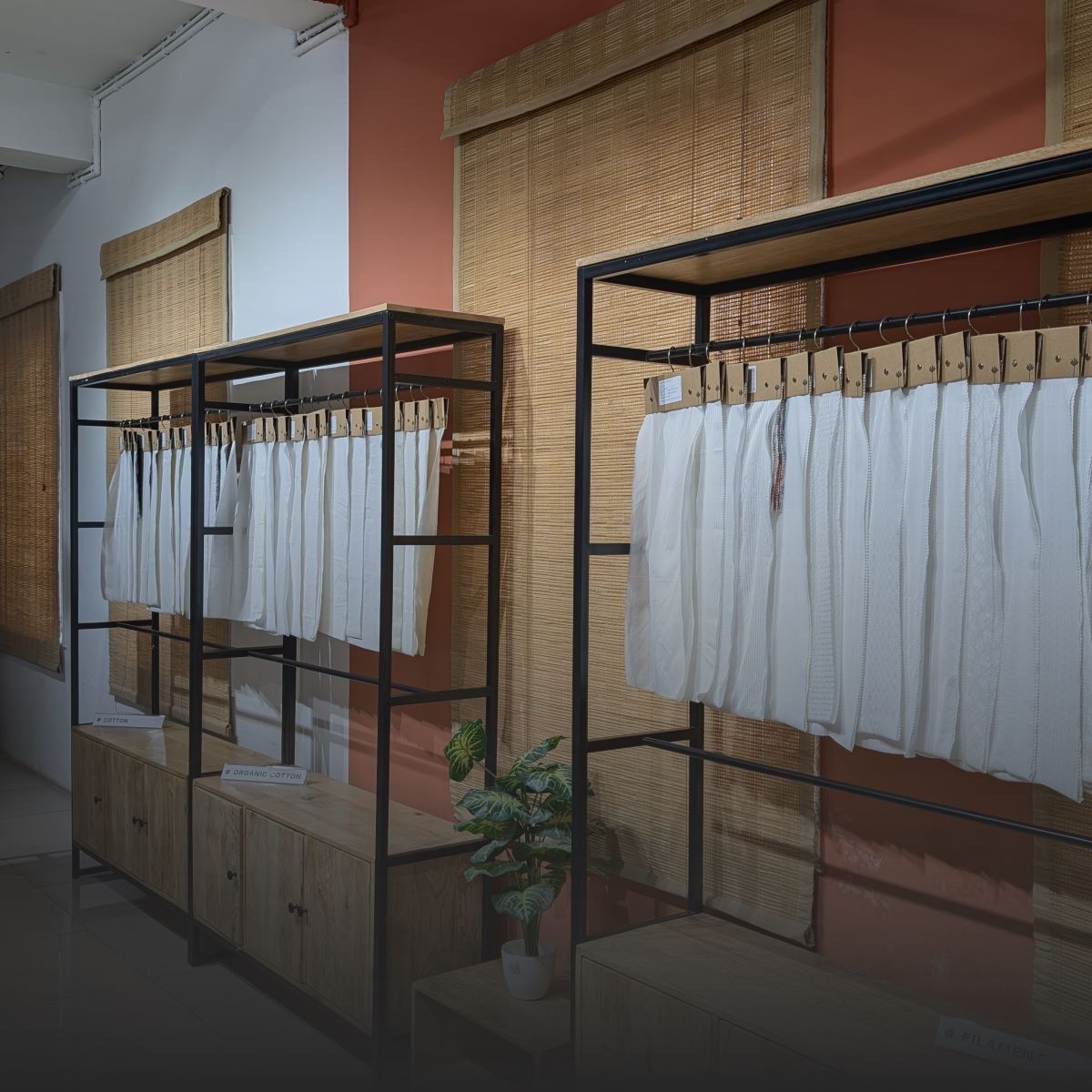Planning and making predictions are no longer guesswork in the fast-paced fashion business of today. Customers want new styles every two weeks, and markets around the world want long-lasting collections. Brands can't afford to run out of stock, delay launches, or have items that don't sell. The game is changing here thanks to AI in garment planning and digital supply chain tools.
From demand forecasting in fashion retail to AI-powered inventory management, technology helps brands lower their risks, get their products to market faster, and choose better suppliers. Using AI and tech tools for garment planning is now a must for any fashion brand, whether it's a direct-to-consumer company or a global brand.
Why Smarter Garment Planning Matters
In the past, forecasting models were heavily based on past sales data and buyers' gut feelings. However, trends can change very quickly these days, in just a few days instead of months.
This is what bad planning does:
- Overproduction → heavy markdowns and dead stock.
- Underproduction → stockouts and lost revenue
- Long lead times → missed seasonal launches.
Fashion brands can precisely balance demand, production, and supply chain efficiency thanks to AI-driven forecasting tools that help them plan.
Role of AI in Fashion Planning & Forecasting
AI is significantly changing how clothing companies predict demand and plan production. How to do it:
- Predictive Analytics: To better understand future demand, machine learning models analyze past sales, timing, social media trends, and market data.
- Style & Size Optimization: AI tools figure out which sizes, colors, or designs will sell the most in different areas. This reduces returns and stock that doesn't sell.
- Dynamic Pricing Forecasts: AI helps businesses determine when to offer deals and how to set prices to maximize revenue.
💡 Example: AI demand forecasting for fashion startups can help a brand planning a capsule collection figure out the exact mix of SKUs that will be needed in different areas.

Steps to Use AI & Tech Tools for Smarter Garment Forecasting
Embracing AI and digital tools can be a smooth experience. Fashion brands can gradually create a smarter, more resilient supply chain by taking a structured approach. If you're wondering how to use AI and tech tools for smarter garment planning and forecasting, here's how to put these technologies into action:
Start with Data Collection & Integration
Collect information about past sales, comments from customers, reports on trends, and insights from social media. Insert this into an enterprise resource planning (ERP) or product lifecycle management (PLM) system to consolidate all aspects of design, sourcing, and production.
Adopt Predictive Analytics for Demand Forecasting
Utilize AI forecasting tools to examine previous sales, seasonal trends, and regional demand patterns. This allows you to anticipate which styles, colors, and sizes will be most effective in various markets.
Leverage 3D Design & Virtual Sampling
Use 3D garment design software such as CLO 3D or Browzwear instead of multiple rounds of physical samples. This reduces sampling costs by as much as 50% and speeds up product approvals.
Enable AI-Powered Inventory Planning
Implement AI inventory management tools to monitor real-time sales data and automate restocking. This keeps storing costs down by preventing both excessive and insufficient stock.
Integrate Blockchain & Traceability Platforms
Use blockchain tools to keep track of ingredients from the mill to the finished garment. This will make your supply chain more open. This makes sure that standards like GOTS, OEKO-TEX, and Fair Trade are followed.
Collaborate with Tech-Enabled Manufacturing Partners
Collaborate with fabric providers and apparel manufacturing companies like Fabriclore, which can find fabrics in real-time, produce clothes with low minimum order quantities, and conduct digital sampling. This enables brands to increase production with reduced risk and greater freedom.
By adding these steps, brands can turn planning from a response-based process into a planned, data-driven approach that guarantees speed, long-term success, and profit.

Tech Tools Transforming Garment Supply Chains
Overcoming inefficiencies, the fashion industry is quickly going digital. Technology-driven solutions are helping brands streamline sourcing, become more open, and react faster to changing consumer demands. By leveraging ERP systems, 3D sampling, AI-driven inventory tools, and blockchain traceability, garment supply chains are becoming smarter, leaner, and more sustainable.
a) ERP & PLM Systems
- Allow for centralised control of the whole product lifecycle.
- Link the teams that do planning, sourcing, production, and logistics.
- Allow real-time viewing of supplies and tracking of orders.
b) 3D Design & Virtual Sampling
- Lowers the cost of real samples and speeds up the approval process.
- Virtual fits can be photorealistic with tools like CLO 3D and Browzwear.
- Timelines for samples are cut by 40–50%.
c) AI-Powered Inventory Management
- Monitors sales data in real-time.
- Enables demand-driven replenishment instead of bulk stockpiling.
- Reduces warehousing costs and improves cash flow.
d) Blockchain & Traceability Platforms
- Makes the supply line clear from the mill to the market.
- Helps make sure that GOTS, OEKO-TEX, and Fair Trade guidelines are met.
- Trust is built with buyers who care about the environment.
Benefits of AI & Tech-Enabled Forecasting
Companies in the fashion industry can get a decisive advantage in the modern market by implementing AI-powered forecasting tools and digital planning systems. Companies can improve processes and increase profitability at every step of the supply chain by eliminating guesswork and outdated models. Some important perks are:
- Reduced Lead Times – Brands can cut down on the time it takes from design to production with predictive analytics and virtual samples. This enables collections to come out faster, helping brands keep up with small trends and sudden jumps in consumer demand.
- Lower Risk of Overstock & Stockouts – Real-time sales data, buying habits in different areas, and regular patterns are all used by AI demand forecasting to make sure that the right amount is made. This cuts down on wasted stock, keeps markdowns from being too expensive, and prevents sales opportunities from being lost.
- Greater Customization Edge – Digital tools differ from traditional forecasting by enabling brands to predict which fabrics, colors, or silhouettes will perform best in specific areas. This helps personalized collections, capsule drops, and niche offers while cutting down on waste.
- Sustainability Advantage – Brands can buy the right amount of fabrics, get the best trims, and waste less fabric when they plan better. This helps with eco-friendly sourcing and following standards like GOTS, OEKO-TEX, and Fair Trade, especially when combined with blockchain-enabled transparency.
- Improved ROI & Profitability – AI-driven planning directly raises margins by finding the best places to get materials, assigning workers, and increasing output capacity. Better planning cuts down on unnecessary costs, improves cash flow, and gives brands the confidence to grow internationally.
AI and tech-enabled forecasting help fashion brands be more flexible, long-lasting, and successful, and they also make the industry more resilient in a field that is very hard to predict.
How Fabriclore Supports Smarter Garment Planning
Of course, Fabriclore knows that every fashion brand, from a big name to a direct-to-consumer company, needs more than just clothes. They need a partner who can streamline and standardise the wardrobe planning process. We created our tech-enabled sourcing and manufacturing platform to simplify processes, eliminate risks, and empower customers to grow smarter.
- Real-Time Fabric Sourcing – Our clients never have to worry about delays or stock issues because they can choose from over 1,000+ fabrics and get real-time information on our stock. They can confidently plan collections because they have a clear view of everything.
- Swatches & Digital Sampling – Brands can start with swatches and as small as 1 metre or online preview designs, rather than committing to large orders without knowing much about them. This cuts down on costs, saves time, and eliminates the need to guess before output.
- Custom Printing & Dyeing – We use digital printing, screen printing, heritage block printing, and sustainable dyeing methods to help our clients make their creative ideas come to life. This way, we make sure that each collection feels unique and is ready to go to market.
- Low MOQ Manufacturing – Fabriclore supports growth-stage brands with low MOQs starting at 50 pieces per style, unlike standard mills, which make it hard to join. This means that new and small labels can try out lines without having to worry about money.
- End-to-End Garment Manufacturing – We make patterns, sew, finish, and package everything, from clothes for men and women to clothes for kids and textiles for the home. We offer a complete, one-stop answer.
- Global Delivery with Reliability – We send swatches and bulk orders all over the USA, UK, Europe, the Middle East, and Australia, ensuring they arrive on time, no matter where our customers are.
To put it simply, Fabriclore works like an extended team for fashion brands. It simplifies processes, ensures consistency, and empowers companies to launch smarter collections with reduced risk and increased trust.
Future of AI & Tech in Fashion Forecasting
Planned fashion will be even better in the next ten years:
- AI Trend Forecasting: Predicting new styles by using social listening and big data.
- 3D Virtual Showrooms: Reducing the need for buyers to travel and rely on trade shows.
- Blockchain for Full Transparency: Keeping track of things from the farm to the fashion show.
- Hybrid Supply Chains: For both speed and variety, mix local quick-turn factories with global manufacturing hubs like Fabriclore.

Conclusion
Fashion brands that utilize AI-powered forecasting and digital supply chain tools will be able to plan clothes more effectively in the future. Brands can lower their risks, make their products last longer, and keep up with quickly changing customer needs by using predictive analytics, virtual sampling, and blockchain traceability.
Fabriclore helps startups and big brands grow faster and smarter with its tech-enabled fabric sourcing and low MOQ garment manufacturing.
To put it simply, smarter planning isn't just about tech; it's about building a data-driven, long-lasting, and profitable fashion future.
Fabriclore doesn't just sell fabrics; we work with brands to quickly, professionally, and sustainably turn creative ideas into collections that are ready for the market.
Also Read: Building Relationships With Fabric Suppliers For Consistent Garment Production
FAQs
Q1. How Does AI Improve Garment Forecasting?
AI uses past sales, customer behaviour, and market trends to guess what people will want to buy next. This helps brands avoid running out of stock or making too much.
Q2. What Tech Tools Are Best For Garment Planning?
ERP software, PLM software, 3D design tools, AI warehouse management systems, and blockchain platforms for tracking things.
Q3. How Does Fabriclore Support Smarter Forecasting?
Digital fabric sourcing, low MOQ production, custom sampling, and global delivery are all parts of Fabriclore that make planning easy.
Q4. Can Startups Use AI-Driven Garment Forecasting?
Yes, tools can be used by more people. Startups can leverage low-risk, small-batch manufacturing and predictive insights in collaboration with partners like Fabriclore.




